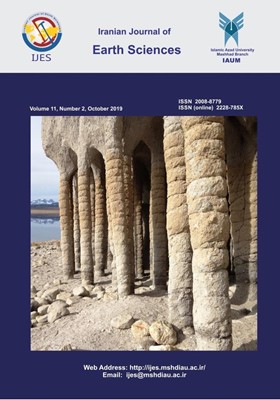A geophysical correlation between near-surface radioactivity and subsurface faults detected by gravity method for a region located in the western desert of Iraq
الموضوعات :
Wadhah Mahmood Shakir AL-Khafaji
1
![]() ,
Hayder Abdul Zahra Al-Dabbagh
2
,
Hayder Abdul Zahra Al-Dabbagh
2
1 - University of Baghdad, College of Science for Women, Department of Physics, Iraq
2 - Ministry of Science and Technology, Department of Geophysics, Iraq
الکلمات المفتاحية: Faulting Radioactivity, Faulting Gravimetry, W- Desert Iraq,
ملخص المقالة :
This research study deals with the processing and interpretation of the total Bouguer anomaly and the total count iso-radiation data for a region located in the western desert of Iraq. The research aims to delineate the approximate locations and the effective depth of faults and how does rocks radioactivity act nearby the faults. The graphical method adopted to separate the residual fields from regional’s, in order to be processed later by applying the horizontal gradient filter. The results displayed as maps and profile section which delineate qualitatively the approximate locations of faults and quantitatively the high radio counts and major faults effective depth within the region. The results of this study showed that the major faults within the region extend with the directions NW-SE, with effective fault depth ranges of 1.7 – 4.9 Km. High radiometric anomalies detected near or between fault locations as they detected after conducting a gravity-radiometric profile section across the region. Peaks of high radiation total counts are located over the elevated blocks which produced by faulting action. The detected faults penetrate the main groundwater aquifer in the region and this considered responsible for transporting radioactive elements to the surface over and nearby the detected fault locations to form spots of accumulated radioactive deposits.


